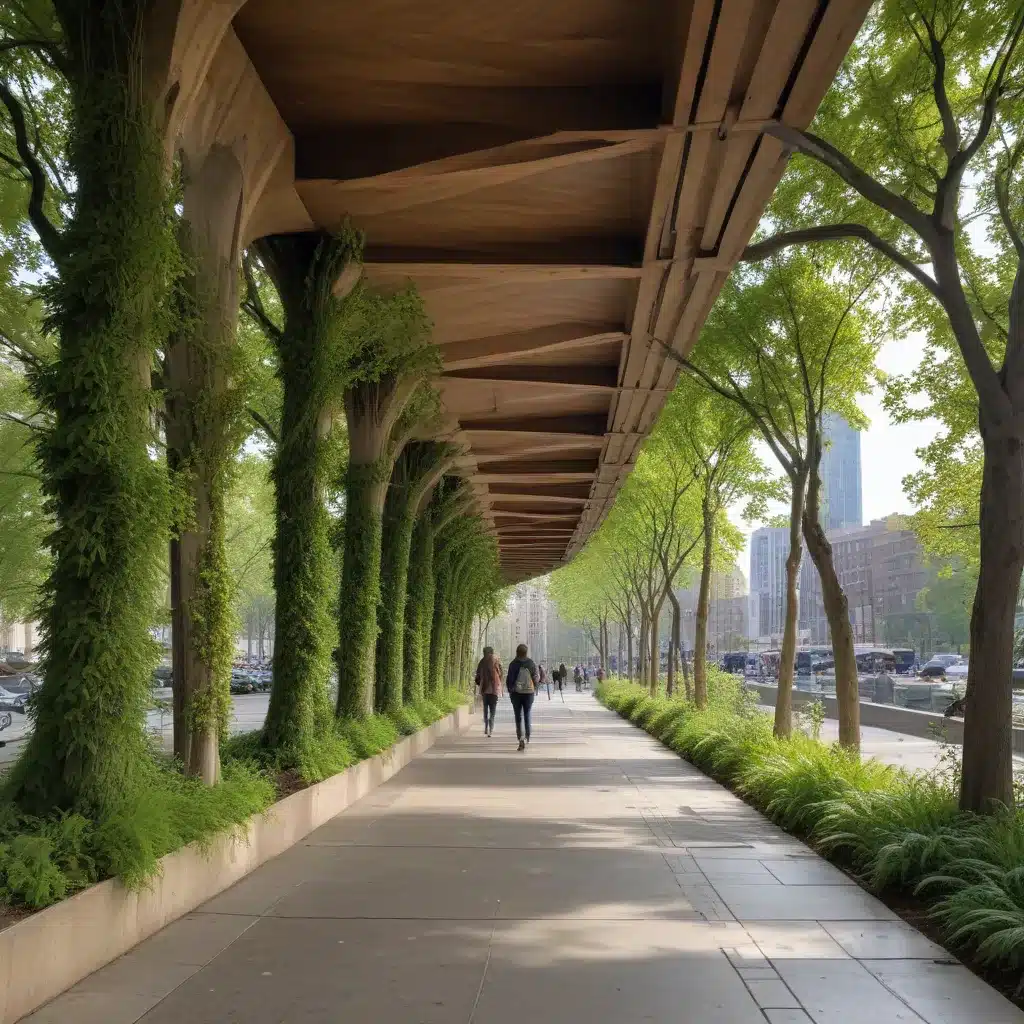
The integration of natural elements within the built environment has emerged as a transformative paradigm in modern architecture and urban design. As cities continue to evolve, the imperative to harmonize human habitats with the surrounding ecosystem has become increasingly evident. TriCounty Tree Care, a leader in comprehensive tree care services, explores the nuanced approaches architects and landscape designers employ to cultivate connections between nature and the urban realm.
Cultivation and Landscape Design
Urban Greenspaces
The strategic incorporation of greenspaces within cities serves as a vital conduit between the natural and built worlds. Architects and landscape architects collaborate to envision innovative ways of integrating lush, biophilic features into the urban fabric. From expansive parks to intimate pocket gardens, these verdant oases provide crucial ecosystem services, enhancing air quality, moderating temperatures, and offering invaluable habitats for urban wildlife.
Natural Elements in Architecture
Beyond the realm of dedicated green spaces, the architectural language itself has evolved to embrace natural forms, materials, and textures. Designers are increasingly drawn to organic shapes, biomimetic principles, and the expressive qualities of natural materials, such as wood, stone, and living vegetation. This approach not only imbues buildings with a sense of warmth and tactility but also forges deeper connections between the human experience and the natural world.
Biophilic Design Principles
The biophilic design movement has gained significant traction, informing the ways in which architects and landscape designers conceive of urban environments. This holistic approach emphasizes the innate human affinity for nature, recognizing the profound physiological and psychological benefits of exposure to natural elements. By incorporating biophilic principles, such as the use of natural light, natural ventilation, and visual connections to greenery, designers create spaces that are not only aesthetically pleasing but also actively nourish the well-being of their occupants.
Architectural Integration of Nature
Blending Built and Natural Forms
The boundaries between the built and natural realms are becoming increasingly blurred, as architects seek to seamlessly integrate architectural structures with their surrounding landscapes. This is exemplified by projects that feature organic, curvilinear forms that mimic natural landforms or incorporate living, green walls that merge the building’s envelope with the surrounding vegetation.
Incorporating Organic Textures and Materials
The selection of building materials has a profound impact on the sensory experience of a space. Architects are increasingly drawn to the use of natural, biophilic materials, such as wood, stone, and earth-based finishes, which not only lend a sense of warmth and tactility but also evoke a deeper connection to the natural world.
Transitional Spaces between Indoors and Outdoors
The design of transitional spaces, such as atriums, courtyards, and indoor-outdoor living areas, plays a crucial role in fostering the seamless integration of nature and architecture. These liminal zones encourage physical and visual engagement with the natural environment, creating a fluid, immersive experience for building occupants.
Urban Ecosystem and Biodiversity
Native Plant Selection
The selection of native plant species is a crucial consideration in urban landscape design, as it supports the local ecosystem and contributes to the preservation of regional biodiversity. By incorporating indigenous flora, designers not only create visually appealing and resilient landscapes but also provide vital resources and habitats for native wildlife, enhancing the overall ecological balance of the urban environment.
Wildlife-Friendly Landscaping
Beyond the selection of native plants, urban landscape designers are increasingly focused on creating wildlife-friendly environments. This may include the integration of features such as pollinator-attracting flowers, bird baths, and insect hotels, which provide food, water, and shelter for a diverse array of urban fauna. By fostering these symbiotic relationships, designers play a crucial role in maintaining the health and biodiversity of urban ecosystems.
Ecological Corridors in Cities
The concept of ecological corridors has gained significant traction in urban planning, as designers recognize the importance of facilitating the movement and dispersal of flora and fauna within the built environment. By strategically connecting green spaces, such as parks, gardens, and urban forests, these corridors enable the unimpeded flow of species and the exchange of genetic material, promoting the overall ecological resilience of cities.
Sensory Experiences in Urban Environments
Experiential Qualities of Naturalistic Design
The integration of natural elements within the built environment extends beyond the purely functional aspects of ecosystem services and biodiversity. Designers also focus on the experiential qualities of naturalistic design, creating spaces that engage the senses and evoke a profound emotional connection to the natural world. From the soothing sounds of flowing water to the tactile experience of natural materials, these design interventions aim to immerse occupants in a sensory-rich environment that nourishes the mind, body, and spirit.
Therapeutic Benefits of Nature Exposure
Numerous studies have demonstrated the restorative and therapeutic benefits of exposure to nature, particularly in urban settings. Architects and landscape designers are increasingly incorporating biophilic design principles to harness the psychological and physiological advantages of interacting with natural elements. By creating calming, rejuvenating spaces within the built environment, these design professionals contribute to the overall well-being of urban dwellers.
Multisensory Engagement with Landscapes
The integration of nature within urban spaces is not limited to the visual realm; designers strive to engage multiple senses to create a truly immersive experience. This may involve the incorporation of olfactory cues, such as fragrant plants, or the auditory experience of flowing water or rustling leaves. By stimulating a range of senses, designers cultivate a profound connection between people and place, fostering a deeper appreciation for the natural world.
As TriCounty Tree Care continues to champion the integration of nature within the built environment, we recognize the vital role that architects, landscape designers, and urban planners play in cultivating connections between human habitats and the surrounding ecosystem. By embracing biophilic design principles, these professionals are transforming the urban landscape, creating vibrant, resilient, and health-promoting spaces that nourish both the environment and the human spirit.


